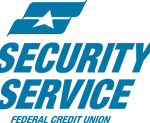 In May, Security Service Federal Credit Union took its collegiate financial readiness course to the bilingual playing field, presenting at the UTSA Parent College and Career Readiness Academy at Café College.
In May, Security Service Federal Credit Union took its collegiate financial readiness course to the bilingual playing field, presenting at the UTSA Parent College and Career Readiness Academy at Café College.
It’s just one more collaborative in a series designed to address the challenges uncovered by the push for increased college enrollment. A movement, if you will, towards a focus not just on recruitment and admissions, but on the creation of a culture focused on degree completion.
All the work, says Letha Harrelson, business development manager in charge of youth education at SSFCU, is to help give teens a financial reality check and teach them how to make “smart, personal financial decisions when they enter into the independence of college life.”
Here’s the deal: it takes far more than academic preparedness to succeed at college. Kids have to be ready to take on the social and personal challenges, as well. And they have to be financially prepared if they are going to have a chance for a brighter, better future in college and beyond.
We know that college is critical: by 2018, 63 percent of all jobs in the US will require a postsecondary education, according to the Georgetown University Center on Education and the Workforce. Yet, while enrollment is at an historic high, almost half of the students who begin college at a two- or four-year institution fail to earn a degree within six years, according to a report by the National Commission on Higher Education Attainment released earlier this year.
And the outlook after college isn’t so grand either with kids graduating strapped in debt, holding degrees that don’t match up to available jobs.
SSFCU takes this very personally. And, through its innovative financial literacy program is working to stem the tide of non-graduation with a three-pronged approach:
- Presenting an option where students can find internships and jobs before jumping straight into college…perhaps even pursue a college degree through tuition reimbursement at the hiring company. Not everyone is prepared to go right off to higher education after graduating high school.
- Collaborating on financial literacy: working with and through organizations that reach students with financial education specific to understanding the costs involved in college and options for funding that will help prevent extensive debt.
- Reaching parents to boost success: For some families, this generation of students will be the first to pursue higher education. For others, the financial landscape is confusing and seems out-of-reach, making them much less able to help navigate their kids through the financial aid process.
